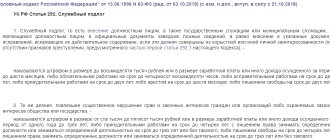The society in which we all move every day has become quite dangerous lately. A large number of crimes, drug addiction, suicide, prostitution, the consequences of which I have to deal with every day. The danger seems to be that in most cases it concerns young people. That is why I considered it necessary to explain, using the example of my own advocacy, what a socially dangerous act is and what it entails for a person and for society as a whole.
Social dangerous act: concept, forms, signs
To explain briefly, this is an obvious threat to people and infrastructure facilities that are protected by law. The actions of people characterized as a public danger have clear signs of a crime. Every crime committed in sound mind is punishable by a specific article of the Criminal Code. Such acts are committed in two forms - action and inaction.
Action - a crime committed through violent, physical influence on an object:
- theft;
- murder committed in a generally dangerous manner (explosion, arson, shooting);
- violence.
But it can be expressed verbally or in writing - a threat, insult, forgery, humiliation.
Inaction is expressed in the form of passive forms of criminal acts. This may be a refusal to fulfill one or another obligation. Some examples for the concept of inaction:
- mother's avoidance of childcare responsibilities;
- a doctor’s refusal to provide assistance to a sick person;
- the driver’s reluctance to help a person involved in an accident;
- evasion of military personnel and police officers from performing professional duties;
- simulation by forgery, forgery of documents.
But the form of inaction can sometimes be influenced by factors beyond a person’s will. Most often, these are natural phenomena that force a person to commit certain acts that pose a public danger.
The same thing, but committed by a person unable to evaluate his actions, cannot be recognized as a socially dangerous act or crime. Such people are exempt from criminal liability.
A terrible example from personal practice. A young woman brought and left two young children with her mother for several days. At that time, the grandmother lived with her partner, who abused alcohol. While the children were already asleep, the man began to experience hallucinations against the background of alcoholism. He strangled one child, seeing him as some kind of monster. He wanted to throw the second one out the window, but his grandmother intervened.
The man was detained and charged under Art. 105 "premeditated murder". But a psychiatric examination established that at the time of the crime the man was in an insane state. Later, the court decided on compulsory treatment, where he has been for several years.
The man cannot be convicted for health reasons, but he poses a danger to society. Therefore, the decision was made to isolate and treat. If his health does not improve, he will likely remain in the facility for life. This case was handled by my colleague, so I cannot really assess the condition of a person who committed such a terrible public act. Since the man’s behavior posed a danger not only to the deceased child, but also to everyone around him.
Degree of public danger of crime
The nature and degree of public danger of a crime is determined by the real threat or damage that the crime led to. Damage is defined as:
- economic;
- military;
- ecological;
- constitutional.
Attention! The character is determined by a specific object that has suffered damage as a result of socially dangerous acts of a person guilty or suspected of a crime. The degree is characterized by the harmfulness and danger that the criminal acts led to.
The concept of a public danger crime can be considered any crime that poses a threat to society, even to several people. Sometimes even administrative offenses can be considered as socially dangerous acts.
Important! A crime that is dangerous, contrary to the law and punishable should be considered socially dangerous.
Disputes about what exactly constitutes a socially dangerous crime are ongoing. There is no clear definition, and the courts can resolve the dispute. The actions of one person, a group of people that pose a threat to several people, a small organization or an entire country will be considered socially dangerous.
How to write a term paper on speech therapy
07.09.2010 262625
These guidelines are compiled to help students gain an understanding of the content and structure of coursework in speech therapy.
Logopedia of pedagogical science that studies anomalies of speech development with normal hearing, explores the manifestations, nature and mechanisms of speech disorders, develops the scientific basis for overcoming and preventing them means of special training and education.
The subject of speech therapy as a science is speech disorders and the process of training and education of persons with speech disorders.
The object of study is a person suffering from a speech disorder.
The main task of speech therapy as a science is the study, prevention and elimination of various types of speech disorders.
Coursework in speech therapy is a student's scientific and experimental research. This type of educational activity, provided for by the educational and professional program and curriculum, contributes to the acquisition of skills in working with literature, analyzing and summarizing literary sources in order to determine the range of insufficiently studied problems, determining the content and methods of experimental research, processing skills and qualitative analysis of the results obtained. The need to complete coursework in speech therapy is due to the updating of knowledge concerning the content, organization, principles, methods and techniques of speech therapy work.
As a rule, during their studies, students must write two term papers - theoretical and practical.
The first course work should be devoted to the analysis and synthesis of general and specialized literature on the chosen topic. Based on this analysis, it is necessary to justify and develop a method of ascertaining (diagnostic) experiment.
In the second course work, it is necessary to provide an analysis of the results obtained during the ascertaining experiment, as well as determine the directions and content of speech therapy work, and select adequate methods and techniques of correction.
So, let’s present the general requirements for the content and design of coursework in speech therapy.
The initial and most important stage of working on a course project is the choice of a topic, which is either proposed by the supervisor or chosen by the student independently from a list of topics that are consistent with the areas of scientific research of the department.
Each topic can be modified, considered in different aspects, but taking into account a theoretical and practical approach. Having chosen a topic, the student needs to think through in detail its specific content, areas of work, practical material, etc., which should be reflected both in the formulation of the topic and in the further construction of the study. It should be recalled that the chosen topic may not only have a purely theoretical orientation, for example: “Dysarthria. Characteristics of the defect”, “Classification of dysgraphia”, but also take into account the practical significance of the problem under consideration, for example: “Speech therapy work on speech correction for dysarthria”. It should also be taken into account that when formulating a topic, excessive detail should be avoided, for example: “Formation of prosodic components of speech in preschoolers of the sixth year of life attending a preschool institution for children with severe speech impairments.”
The course work includes such mandatory parts as: introduction, three chapters, conclusion, bibliography and appendix.
The text of the term paper begins with the title page . An example of its design can be seen here.
Then the content of the work is given, in which the names of chapters, paragraphs, and sections are formulated in strict accordance with the content of the thesis. An example of its design can be seen here.
In the text, each subsequent chapter and paragraph begins on a new page. At the end of each chapter, the materials are summarized and conclusions are formulated.
The introduction reveals the relevance of the problem under consideration in general and the topic being studied in particular; the problem, subject, object, and purpose of the study are defined. In accordance with the goal and hypothesis, objectives and a set of research methods aimed at achieving the objectives must be defined.
The relevance of the topic lies in reflecting the current level of pedagogical science and practice, meeting the requirements of novelty and usefulness.
When defining the research problem, it is important to indicate what practical tasks it will help to implement in training and educating people with speech pathology.
The object of research is understood as certain aspects of pedagogical reality, perceived through a system of theoretical and practical knowledge. The ultimate goal of any research is to improve this object.
The subject of research is some part, property, element of an object, i.e. the subject of research always indicates a specific aspect of the object that is to be studied and about which the researcher wants to gain new knowledge. An object is a part of an object.
You can give an example of the formulation of the object, subject and problem of research:
– The object of the study is the speech activity of preschool children with phonetic-phonemic speech disorders.
– The subject of the study is the features of intonation speech of children with phonetic-phonemic speech disorders.
– The research problem is to determine effective directions for speech therapy work on the formation of intonation expressiveness of speech in the system of correctional intervention.
The purpose of the study contributes to the specification of the object being studied. The goal of any research is to solve a specific problem. The goal is specified in tasks taking into account the subject of research.
The research objectives are formulated in a certain sequence, which determines the logic of the research. The research objectives are set on the basis of a theoretical analysis of the problem and an assessment of the state of its solution in practice.
The first chapter is an analysis of literary sources, which examines the state of this problem in historical and modern aspects, and presents the most important theoretical principles that formed the basis of the study.
When writing the first chapter, you should pay attention to the fact that the text of the course work must be written in a scientific style. When presenting scientific material, it is necessary to comply with the following requirements:
– Specificity – a review of only those sources that are necessary to disclose only a given topic or solve only a given problem;
– Clarity – which is characterized by semantic coherence and integrity of individual parts of the text;
– Logicality – which provides for a certain structure of presentation of the material;
– Reasoning – evidence of thoughts (why this and not otherwise);
– Precision of wording, excluding ambiguous interpretation of the authors’ statements.
A literary review of the state of the problem being studied should not be reduced to a consistent presentation of literary sources. It should present a generalized description of the literature: highlight the main directions (currents, concepts, points of view), analyze in detail and evaluate the most fundamental works of representatives of these directions.
When writing a work, the student must correctly use literary materials, make references to the authors and sources from which the results of scientific research are borrowed. Failure to provide required references will reduce your coursework grade.
As a rule, in coursework on speech therapy, references to literary sources are formatted as follows: the number of the cited source in the general list of references is placed in square brackets. For example: General speech underdevelopment is a speech pathology in which there is a persistent lag in the formation of all components of the language system: phonetics, vocabulary and grammar [17].
When using quotations, in square brackets, in addition to indicating the source number, the page number from which this excerpt is taken is indicated, for example: Speech rhythm is based on a physiological and intellectual basis, since, firstly, it is directly related to the rhythm of breathing. Secondly, being an element that performs a communicative function, “correlates with meaning, i.e. controlled intellectually” [23, P.40].
However, course work should not be of a purely abstract nature, so you should not abuse the unreasonable abundance of citations. Quoting should be logically justified, convincing and used only when really necessary.
In the second chapter , devoted to experimental research, the organization should be described and the program of the ascertaining experiment should be presented. The survey methodology, as a rule, consists of a description of several series of tasks, with detailed instructions, visual and lexical material, the procedure for completing tasks by experiment participants, and scoring criteria. This chapter also provides a qualitative and quantitative analysis of the results obtained.
When analyzing the results of an experiment, it is necessary to use a scoring system. Examples of various criteria for quantitative and qualitative assessment are presented in the following works:
– Glukhov V.P. Formation of coherent speech in preschool children with general speech underdevelopment. - M.: Arkti, 2002. - 144 p.
– Fotekova T.A. Test methodology for diagnosing oral speech of primary schoolchildren. - M.: Arkti, 2000. - 56 p.
– Levchenko I.Yu. Pathopsychology: Theory and practice. - M.: Academy, 2000. - 232 p.
In order to visually present the results obtained during the experimental study, it is recommended to use tables, graphs, diagrams, etc. Histograms can be used in a variety of ways - columnar, cylindrical, planar, volumetric, etc. An example of the design of tables, figures, and histograms can be found here.
The third chapter provides a rationale for the proposed methods and techniques and reveals the content of the main stages of correctional work.
The conclusion contains a summary of the material presented and the main conclusions formulated by the author.
The bibliography must contain at least 25 sources. The list includes bibliographic information about the sources used in preparing the work. An example of its design can be seen here.
In the application you can present bulky tables or illustrations, examination protocols, observation records, products of activity (drawings, written works of children), notes from speech therapy classes, etc.
The volume of one course work must be at least 30 pages of typewritten text.
In general, coursework in speech therapy is the basis for a future thesis, in which the study of the begun problem can be continued, but from the standpoint of a different approach or a comparative analysis of the disorders being studied in different age categories of people with different types of speech disorders.
The content and format of theses in speech therapy can be found here.
Literature:
1. How to write a term paper on speech therapy: Methodological recommendations. Educational and methodological manual / Comp. Artemova E.E., Tishina L.A. / Ed. Orlova O.S. – M.: MGOPU, 2008. – 35 p.
2. Research work of students in the system of higher professional pedagogical education (specialty 031800 - Speech therapy). Methodological recommendations for completing the thesis / Compiled by. L.V. Lopatina, V.I. Lipakova, G.G. Golubeva. - St. Petersburg: Publishing house of the Russian State Pedagogical University named after. A. I. Herzen, 2002. - 140 p.
Criminalization and decriminalization of socially dangerous acts
The world does not stand still; the scientific and technical sphere is developing progressively. Against this background, new criminal acts appear that are classified as socially dangerous. It can be:
- cybercrime;
- financial scams using the Internet;
- change in genotypes;
- human cloning.
This and much more forces us to reconsider the types of crimes related to public crimes. Thus, at the legislative level, it carries out the criminalization and decriminalization of socially dangerous crimes. In other words, criminalization is a legislative framework that provides for punishment for the listed crimes. Whereas decriminalization is the absence of punishment for a crime that was previously punishable.
The criteria for the criminalization of socially dangerous acts were determined not so long ago. This is partly due to the massive use of the Internet. It is worth recalling the work of groups on social networks that led to mass suicides of teenagers. The same crimes have recently included calls for mass meetings, rallies, and pickets.
A striking video example of the criminalization of socially dangerous crimes among teenagers:
In this example, the danger of an increase in mass socially dangerous teenage crime is associated specifically with the Internet. It is worth adding to this the “help” of alcohol and drugs to understand how much crime may increase in the near future.
Today, all offenses are classified according to the degree of danger to society as crimes and misdemeanors and depend on the following indicators:
- the degree of harm caused;
- methods of committing a crime;
- consequences and their severity after the acts;
- goals, motives;
- the identities of the offenders.
| Violation of offenses | Classification of public danger | Danger level |
| Administrative | Misconduct | Not dangerous |
| Civil | Misconduct | Not dangerous |
| Disciplinary | Misconduct | Not dangerous |
| Criminal | Any type of crime | The degree of public danger is high. The crime committed caused significant harm. |
Maybe the table presented will help to better understand what exactly should be considered a socially dangerous crime, and what can be classified as an easier definition of misdemeanor. But, again, among administrative, civil and disciplinary offenses there are offenses that the court has the right to accept as criminal offenses.
To determine the degree of socially dangerous crimes, the Criminal Code provides for such a concept as significant harm. It is divided into:
- essential;
- large;
- especially large.
And also the degree of harm:
- light;
- average;
- heavy;
- especially heavy.
Based on these data, the degree of harm caused by the social crime committed is determined.
A striking example of a modern social crime. Two young people created and then distributed a malicious program over the Internet. As a result of their actions, hundreds of computers were disabled. Important programs in banking and government systems were destroyed. Law enforcement agencies managed to identify and detain this tandem. They were later charged with public offence. Both young men were convicted for their actions and sent to prison, where they would spend three years.
Misdemeanors and crimes
There are two types of offenses: misdemeanors and felonies.
A crime is a guilty, socially dangerous, illegal act that encroaches on social relations protected by criminal law and causes harm to the interests of the individual, society and state protected by law. In particular, these are individual rights and freedoms, public order, the foundations of the constitutional system of the state, etc. Depending on the nature and degree of public danger, crimes are divided into the following types: crimes of minor gravity, crimes of moderate gravity, serious crimes and especially serious crimes.
Misdemeanors are all illegal acts other than crimes. The main criterion for distinguishing crimes and misdemeanors is the degree of public danger of these offenses and the sanctions provided for these unlawful acts. Depending on the area of social life they are committed, the nature of the harm caused, and the characteristics of the corresponding legal sanctions, offenses are divided into administrative, disciplinary and civil law.
An administrative offense (misdemeanor) is an unlawful, guilty (intentional or careless) action or inaction that encroaches on the rights and freedoms of citizens, state or public order, property, or the established order of government, for which the legislation provides for administrative liability. The signs of an administrative offense are social danger, illegality of the act, and the guilt of the offender.
The composition of an administrative offense includes the following elements: object, objective side, subject, subjective side. The object of an administrative offense is social relations arising in the process of implementing the constitutional rights and freedoms of citizens, property rights, established management procedures, public order, etc.
The subjects of an administrative offense are individuals and legal entities. Administrative legislation provides for four groups of individuals - citizens of the Russian Federation, foreign citizens, stateless persons and officials.
The objective side of an administrative offense is manifested in the action or inaction that entailed the occurrence of an administrative tort. The subjective side includes the motive, goals and guilt of the offender. When committing an administrative offense, guilt can be expressed both in the form of intent and in the form of negligence. The presence of guilt of the offender in one form or another is the most important and necessary sign of an administrative offense.
Disciplinary offense in the field of education
This is a failure by students to fulfill their obligations stipulated by educational legislation, the charter of an educational institution, internal regulations or an agreement, a penalty for which is imposed by the head of an educational institution.
The list of the main elements of disciplinary offenses committed by students includes such guilty, illegal acts that encroach on the rule of law in the educational sphere, interfere with the implementation of the educational process, conduct lectures, practical and other classes, or are associated with failure to comply with legal decisions and orders of the administration of an educational institution .
In particular:
-current academic failure;
— systematic lateness or failure to appear without good reason for practical or other compulsory classes;
— appearing in classes or on the premises of an educational institution in a state of alcohol, drug or toxic intoxication;
— violation of fire safety measures, smoking in places not designated for these purposes;
— offensive and disrespectful actions and statements towards teachers or staff of dormitories and students, and other persons;
— use of obscene (obscene) language on the territory of the technical school and in dormitories;
— violation of discipline during lectures, seminars and other educational classes;
— failure to comply with the legal requirements of a teaching worker, his deputies, decisions and orders of the head of an educational institution;
— forgery (falsification) of educational documents and certification results;
— dissemination of information that causes moral harm to the health of students and participants in the educational process;
- use of educational equipment and other property of an educational institution without permission, staying on the premises of an educational institution in the evening and at night after classes are over;
— damage, destruction or destruction of equipment or other property of an educational institution;
For committing the listed actions, the following disciplinary measures may be applied to students:
-comment,
-rebuke,
- expulsion from technical school.
A disciplinary offense is a violation of labor or service discipline, that is, failure to perform or improper performance due to the fault of an employee of the labor or service duties assigned to him. Disciplinary offenses undermine production, service, military, and educational discipline. Disciplinary offenses are mainly provided for by labor legislation, disciplinary statutes, and regulations on service in government bodies.
The characteristic features of a disciplinary offense are : firstly, the fact that the disciplinary offense is committed by an employee who is in an employment relationship with this organization and has labor tortious capacity. Secondly, a disciplinary offense is expressed in an unlawful and guilty failure to perform or improper performance of one’s labor or official duties. Unlawful behavior is manifested in violation of labor or official duties assigned to an employee by an employment contract.
An example of unlawful behavior could be absenteeism, showing up to work while drunk, failure to comply with labor standards, being late for school, leaving a military unit without permission, etc. An unlawful act committed intentionally or carelessly is considered guilty. Thirdly, as a result of a disciplinary offense, harm is caused to the work collective or organization if there is a causal connection between the unlawful action (inaction) and the resulting harm (damage). Fourthly, a disciplinary offense entails the application of disciplinary sanctions provided for by labor legislation or disciplinary statutes.
Thus, a disciplinary offense can be defined as a culpable unlawful violation of labor or official duties by employees, for the commission of which disciplinary liability is established and a disciplinary measure can be applied as provided for in labor legislation or disciplinary statutes.
A civil offense is a guilty unlawful act of a person capable of delict, causing harm to property and related personal non-property relations regulated by civil law. These are offenses such as non-fulfillment or improper fulfillment of contractual obligations, conclusion of illegal transactions, violation of copyright, causing property damage, etc. Both individuals and legal entities can be subjects of civil offenses.
A characteristic feature of civil offenses is that the liability provided for these offenses is of a restorative nature in the form of property or non-property sanctions.
The social essence of offenses is rooted in the very social relations that give rise to people's actions. Illegal behavior as a special social behavior is determined by the presence of objective and subjective causes and conditions that exist in social life itself. According to the famous American sociologist E. Schur, “all existing models of criminal behavior are the price that we are forced to pay for the structure of our society that we ourselves have created”6. Consequently, the social nature of crime is determined by the socio-economic conditions of society.
Subjective causes of offenses are the low level of legal awareness and legal culture of each individual, negative motivations, goals, needs that are contrary to the interests of society. Illegal behavior is always individual and is an act of will and conscious activity. Therefore, it is important to know and study the mental and emotional motives (reasons) that prompted the commission of illegal acts.
The objective causes of offenses are certain contradictions in public life, characterized by economic, political, social and spiritual factors. Objective conditions of offenses are shortcomings of an organizational and technical nature that contribute to the action of subjective and objective reasons for the offense.
The process of overcoming offenses is associated with a comprehensive solution to a number of economic, political, social, interethnic, interfaith problems and tasks facing society to improve the material well-being of the people, eliminate social inequality, legal education, and ensure law and order.









